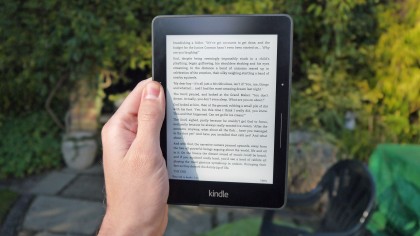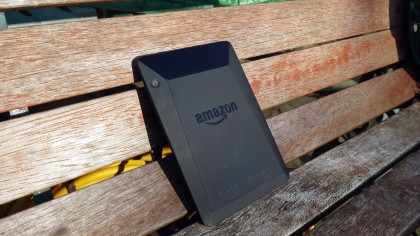Amazon Kindle Voyage vs Kindle Oasis: which top-end ereader is for you?
Retired luxe or pricey elite?

It’s almost Amazon Prime Day, and one of the best discounts is on the company’s own Kindles. But which will you choose?
If you’re after the more luxe models, the Kindle Oasis (2nd generation) might be your best pick. But what about the now-retired Kindle Voyage – is it worth hunting one of them down?
Let’s dive in to the differences between both upscale ereaders.

Kindle Voyage vs. Kindle Oasis design
Form factor is the most obvious difference between these two pricey ereaders. The Kindle Voyage has a traditional centered screen with a button on each side, while the Kindle Oasis has a deliberately offset screen with two buttons on one side only – which is notably thicker to better hold one-handed.
The Kindle Voyage has wide bezels but a flush screen, with soft buttons that buzz with haptics when you press them rather than simply click inwards. It has a rubber cover around the angled back, and the cover curves around the edges of the plastic front.
The Oasis, on the other hand, has a metal frame for an extra degree of luxe, but it’s slightly (about 14g, to be specific) heavier than the Voyage. As previously stated, one side is thicker than the other to give a bit of a one-handed grip – and unlike the Voyage, the Oasis is IPX8 water resistant up to 2 meters or dunked for 60 minutes, which is a relief for poolside or bathtime reading.

Kindle Voyage vs. Kindle Oasis display
The Kindle Voyage was definitely meant to be premium. Its 6-inch, 300dpi screen shows sharp words, with a 6-LED backlight that uniformly lit the screen more than previous less pricey Kindles. The ambient lighting brightens or darkens the screen according to outside conditions, with ‘micro-etching’ across the screen for a more paper-like look.
Sign up for breaking news, reviews, opinion, top tech deals, and more.
The Kindle Oasis has a larger 7-inch display at the same 300dpi resolution as most Kindles. It has 12 LEDs backlighting its screen, double those in the Voyage.

Kindle Voyage vs. Kindle Oasis specs
Storage size is another area where these ereaders differ. The Voyage comes with 4GB of storage, as befits a device released in 2014, while the newer Oasis comes in either 8GB or 32GB.
The Oasis does have another particular perk – it can play audio, which could be music but is ideally reserved for audiobooks. There’s no speakers or even a headphone jack, sadly, but you can connect via Bluetooth and listen that way. If you happen to buy the Audible companion to a book, you can switch between text and audio versions while keeping your place.

Kindle Voyage vs. Kindle Oasis price
The Kindle Oasis starts at a hefty $249/£229 for the 8GB, WiFi-only version, or you can bump that up to 32GB for $279/£259. If you want online connectivity, the 32GB WiFi + cellular version costs $349/£319. (None seem to be currently available in Australia.)
As previously mentioned, Amazon retired the Kindle Voyage in August 2018 (per TechTimes). You can still pick one up secondhand, like this listing on eBay for $159, which is a discount off the $199/£169/AU$250 launch price for the basic WiFi-only model.

Takeaway
In many ways, there is no competition: the Kindle Oasis is so much easier to find that it’s almost criminal to vouch for the discontinued Voyage. But the former was even more expensive from the jump, and it would be harder to justify picking up the much pricier Oasis when the Voyage offered nearly as luxe an experience for less.
That aside, the Oasis does have the advantage in feel and storage, allowing you to filter in your audiobooks and download them with a cellular connection. If price isn’t an issue, the Oasis is the superior ereader.

David is now a mobile reporter at Cnet. Formerly Mobile Editor, US for TechRadar, he covered phones, tablets, and wearables. He still thinks the iPhone 4 is the best-looking smartphone ever made. He's most interested in technology, gaming and culture – and where they overlap and change our lives. His current beat explores how our on-the-go existence is affected by new gadgets, carrier coverage expansions, and corporate strategy shifts.